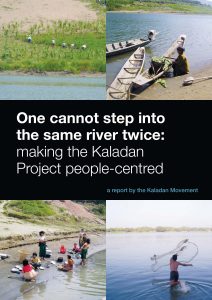The Laymro is the second longest and most used river in Arakan. It originates in the northern part of the Arakan Roma Mountain range in Chin State. From there it travels 167 kilometres (104 miles) before joining the Kaladan River east of Site-tway and emptying into the Bay of Bengal. The fertile valleys along the lower part of the Laymro stretch for about 96 kilometres (60 miles) and support extremely productive rice paddies. At times of excessive rainfall the river floods, which frequently changes its course downstream. The river is called “Laymro Chaung” by the people of Panmraung village that is located near its source; “Ramaung River” near Munbra Town; and “Pauksingya” or “KywayKhu River” at the mouth of the river. It was also known as “Eysananaddy River” in ancient times. The Laymro dynastic era, one of the most significant periods in the history of the civilization of Arakan, was named after the Laymro River. The Laymro era lasted over 600 years, from 818 to 1430 AD, during which five different capitals were built along the river, at Sambawak, Pyinsar, Parein, Nareinjara Taungngu and Launggret.



